Invisalign – Columbus, OH
Subtly Straighten Your Smile
You may think orthodontic work sounds like a hassle. Fair enough – many people don’t like having metal brackets and wires on their teeth. The truth, though, is that metal braces aren’t the only way to straighten your smile. You could always try Invisalign in Columbus as an alternative! Glamm Dentistry uses this treatment to align your pearly whites smoothly and subtly. If you’d like to learn more about it, just keep reading orbook a visit with our office.
How Invisalign Works
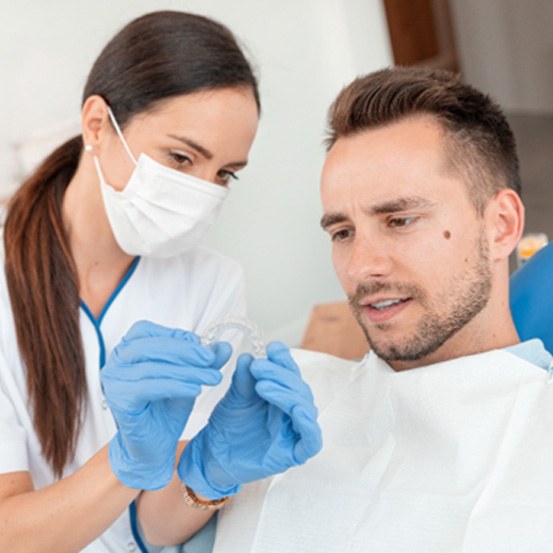
In essence, Invisalign is a series of clear, plastic aligners that gradually straighten teeth. These trays cause micromovements that, over time, shift each tooth into its proper position. The final result is the straight smile you’ve always wanted!
The rules for the Invisalign process are simple enough. For starters, you need to wear a given aligner for 7-14 days before trading it out for the next one. You must also wear the trays for 22 hours daily; otherwise, you’ll face treatment delays. Should you follow these guidelines well, your Invisalign journey will only last 12-18 months.
Who Can Invisalign Help?

Although Invisalign can’t address severe cases, it can treat mild and moderate misalignment. In particular, it’s an ideal fix for issues like crowded teeth, gapped teeth, overbites, underbites, crossbites, and open bites. Below, you’ll find a little more information on each:
Crowded Teeth
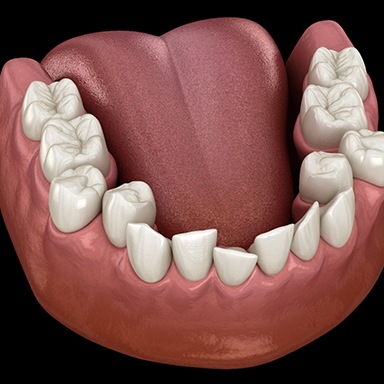
If there isn’t enough room in your mouth, then your teeth will crowd together. In addition to taking a toll on your self-esteem, this bite problem can result in issues like severe wear of enamel, trouble chewing properly, and even difficulty enunciating clearly. Thankfully, Invisalign can fix such crowding. Its trays gently guide your teeth into their properly aligned positions, addressing crooked and overlapped teeth in the process.
Gaps Between Teeth
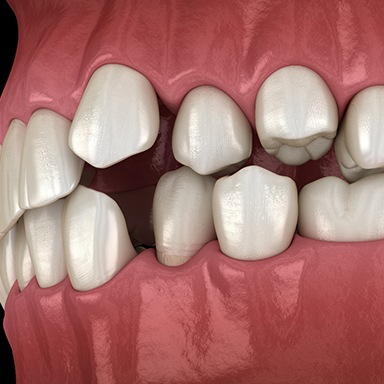
Like crowded teeth, gapped teeth can make you feel self-conscious. This orthodontic problem can also lead to an increased risk of oral health problems like tooth decay and gum disease since plaque, food particles, and other debris can get trapped. Fortunately, Invisalign can fix tooth gaps too. As it slowly moves your teeth, the spaces between the latter are eventually closed.
Overbite
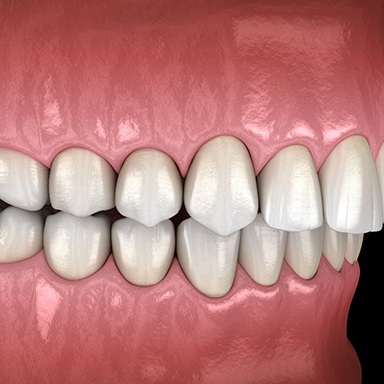
You want your top teeth to sit in front of your bottom teeth, but you don’t want there to be a significant gap. This orthodontic problem, known as an “overbite,” can lead to everything from trouble speaking clearly to premature wear and tear on certain teeth. The good news is that mild and moderate overbites can often be corrected with Invisalign, especially with the help of orthodontic accessories like rubber bands.
Underbite
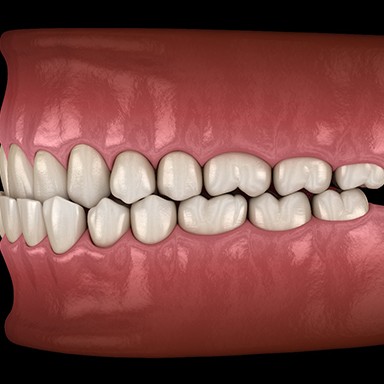
What if your lower teeth sit in front of your upper ones? This is referred to as an underbite and, in mild and severe cases, it can take a serious toll on the look, health, and function of your smile. The silver lining is that there are some cases where Invisalign is the solution. Often, this requires the use of rubber bands, buttons, and other orthodontic accessories, but it’s still considerably more discreet than traditional braces.
Crossbite
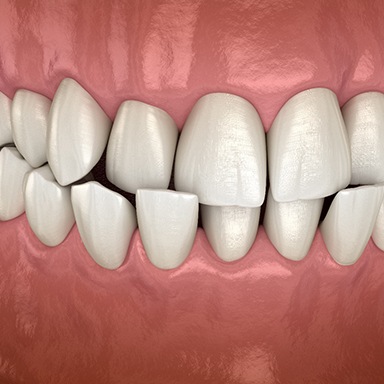
A crossbite is unique because it happens when some of the bottom teeth sit in front of the top teeth and vice versa. The bad news is that it can worsen your smile’s appearance and put unneeded pressure on your temporomandibular joint. Left untreated, this pressure can cause problems like TMJ disorder and teeth grinding or clenching.
Open Bite
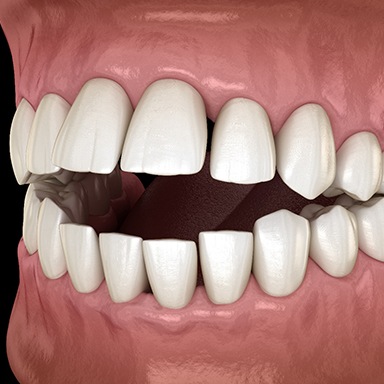
When you bite down, do your upper and lower teeth come together evenly? If they don’t, then you may have an open bite. One of the biggest concerns with this orthodontic problem is that it can place immense pressure on certain teeth, resulting in considerable wear and tear. To prevent that from happening, we recommend exploring your orthodontic treatment options, like Invisalign.
The Benefits of Invisalign

Because Invisalign relies on unique methods, it has many benefits that braces don’t. Some of these include:
- Short Treatment Timelines – On average, Invisalign only needs 12 to 18 months.
- No Dietary Restrictions – Its aligners are removable, so Invisalign won’t get in the way of your favorite foods or drinks.
- Hassle-Free Oral Hygiene – Invisalign trays can be removed before teeth cleaning.
- Comfortable Treatment – After a short adjustment period, aligners will move your teeth fairly painlessly.
Living with Invisalign Aligners

Whether you’re still in the research phase or your first set of trays are already on their way, it’s normal to want to know as much as possible about life with braces. Don’t worry – we’ve dedicated this next section to that very topic! From how long you need to wear your trays to how to clean them properly, you can learn lots of important information on living with Invisalign right here.
Wearing Your Trays
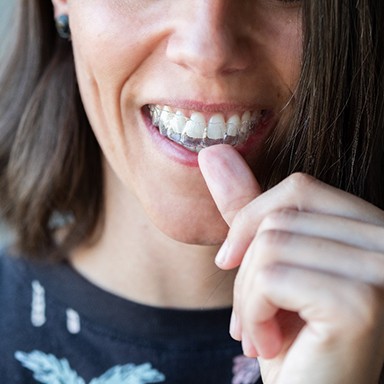
Since your trays aren’t bonded to your teeth, it’s of the utmost importance that you make an intentional effort to wear them for 20-22 hours a day! If you don’t, then your teeth won’t move as anticipated, increasing your chances of falling off-track with your treatment plan. That’s why we typically recommend only taking them off to complete your oral hygiene regimen, eat, or drink something other than water.
Cleaning Your Aligners
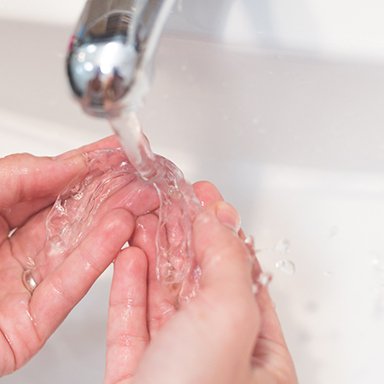
Fortunately, you don’t need any fancy or expensive products to clean your aligners properly; all you need is a soft-bristled toothbrush and some clean, cool water! First, rinse your trays with water. Then, hold them securely while you use the bristles to gently clean each surface. If your aligners still look a bit yellow, then you can also use the cleaning crystals that came in your Invisalign welcome kit.
Eating & Drinking

Although there aren’t any dietary restrictions with Invisalign, there are still a few best practices we recommend. For example, you shouldn’t consume sugary foods and drinks in excess because if you develop a cavity, your treatment plan will be put on hold until you get the necessary restorative care. We also recommend exercising caution with raw vegetables and other crunchy foods since they can cause an attachment to fall off.
Losing or Damaging a Tray

Remember, every moment you are not wearing your aligners counts. If you think you’ve lost your trays, then carefully retrace your steps. If you can’t find them, then contact us ASAP. If you accidentally broke one of your aligners, don’t try to repair them at home with an adhesive like super glue. Instead, give us a call. In both cases, we will review your treatment plan and determine what the next best step is.
Routine Check-Ins
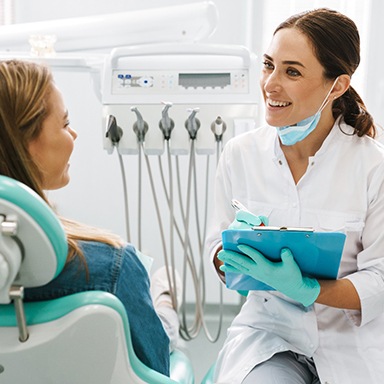
One important reason to come in for your check-in visits is to get your next batch of aligners. However, even if you already have all of your trays, you need to prioritize these appointments. After all, this is where we can monitor the movement of your teeth and ensure everything is moving as expected. It’s also a great time to ask any questions you have – from how to improve your wear time to how to keep your trays clear.
Understanding the Cost of Invisalign
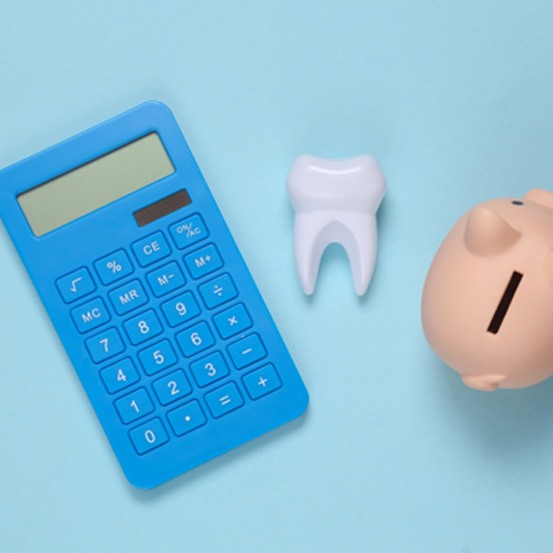
Since Invisalign is customized to each patient, its price varies from person to person. That’s why you need to consult Dr. Glamm for an exact treatment estimate. Whatever your situation, though, trust that understanding the cost of Invisalign won’t be difficult. Our team will ensure you get an accurate estimate and an in-depth review of the payment options available. Simply put, you can expect the process to be as stress-free as possible.
Factors That Affect the Cost of Invisalign
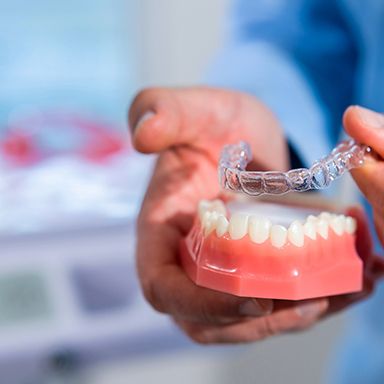
We mentioned above the importance of your initial consultation. At this visit, Dr. Glamm will perform an oral exam that assesses cost-related factors, including:
- How complex/severe your case is
- How many aligners are needed
- If orthodontic accessories, like rubber bands, are needed
- If single-arch treatment is possible
- The type of retainer you need
Please keep in mind that how well you follow the treatment guidelines is important as well. If you fall off-track with your treatment plan and a new one needs to be made, there may be additional costs.
Invisalign vs. Mail-In Aligners: Which Costs More?
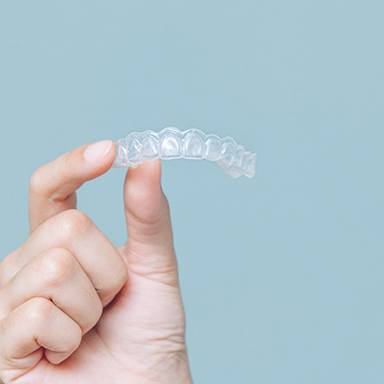
You may have seen mail-in aligners over the years on social media. These have gained immense popularity because of the lower upfront cost; however, it’s important to know the full truth of these alternatives. In addition to not completing a comprehensive exam, DIY impressions are used (which are difficult to use and often inaccurate). Furthermore, there usually isn’t a dental professional supervising the treatment process, and professional dental organizations have warned the public against mail-in aligners in the past. For all of these reasons, you should choose the tried-and-true clear aligner treatment: Invisalign.
Does Dental Insurance Cover Invisalign?

If you have dental insurance, it’s possible that your provider will cover a portion of the cost of Invisalign. So, it’s worth checking! Although we’re out-of-network with most plans, we can still provide you with an estimate of the cost, including your out-of-pocket expenses, upfront so there aren’t any unwanted surprises along the way. Simply put, we’re here to help, so don’t hesitate to reach out to us with any questions you have.
Options for Making Invisalign Affordable
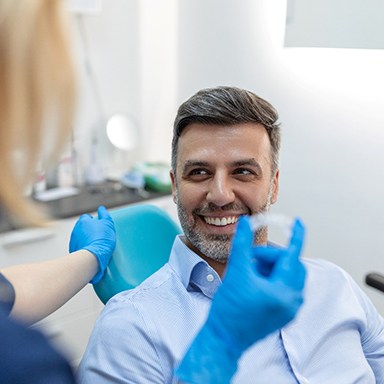
At Glamm Dentistry, we offer patients periodic specials with the goal of making everything from routine checkups to cosmetic dentistry more affordable. We also welcome flexible financing with CareCredit. As a result, you don’t have to strain your wallet trying to pay for the entire cost of Invisalign upfront. Instead, you can space out your payments over the course of several months, ensuring your orthodontic treatment fits neatly into your monthly budget.
Invisalign FAQs
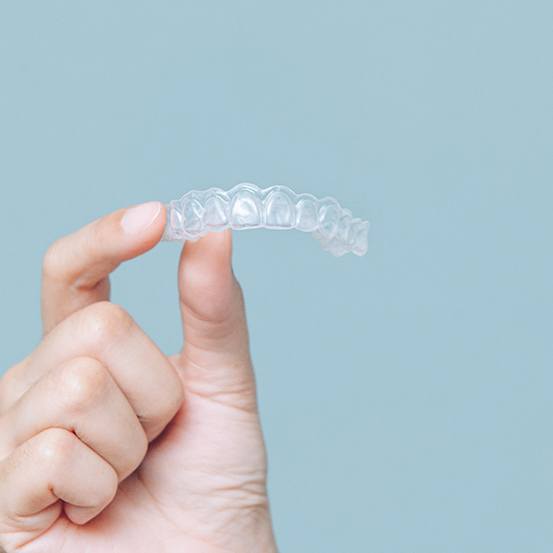
Whether you’ve been considering getting Invisalign for several years or only a few weeks, it’s normal to have questions on your mind. Will the trays hurt? Will I develop a lisp? How long will my treatment take? While we will absolutely answer any questions you have during your consultation, you’re also welcome to learn the answers to FAQs about clear aligner treatment right here!
Does Invisalign Hurt?
Don’t worry – Invisalign doesn’t hurt. There are a few reasons for this, including that the aligners are crafted from smooth materials instead of metal brackets and wires. Now, it is completely normal to experience some soreness from the movement of your teeth, but this can easily be alleviated. Try sipping on cold water, sticking to soft foods, and taking an OTC pain reliever as instructed.
Does Invisalign Give You a Lisp?
Next to “Does Invisalign Hurt?”, this is one of the most asked questions prospective patients have about life with Invisalign. If you’ve been wondering the same thing, you’ll be happy to know that the answer is “no.” While some patients do experience a slight learning curve when it comes to speaking with clear aligners, the large majority do not. Furthermore, those that do can speed up the adjustment period with some practice, which is why we recommend reading aloud and repeating any difficult words you come across until they sound natural.
How Long Does Invisalign Take?
While the average Invisalign treatment timeline is just 12 to 18 months, there isn’t a one-size-fits-all answer. For example, some patients will only wear their aligners for six months or so. Others may need significantly longer if they are struggling with a more severe case of malocclusion or have fallen off-track with their original treatment plan due to not wearing their aligners for 20-22 hours a day. No matter how long your original timeline is, the best way to stay on track is by following all of the treatment guidelines given to you, including implementing a solid oral hygiene routine and taking good care of your aligners.
How Do I Clean My Invisalign?
To properly clean your Invisalign aligners, you only need two things: a soft-bristled toothbrush and some clean, lukewarm water. Simply dampen your toothbrush, scrub each surface of your trays, rinse them with clean water, and you’re set! If your trays have begun to discolor, then you can also soak them in a mixture of water and cleaning crystals (the ones that came in your Invisalign welcome kit).
Can You Eat with Invisalign?
Since there aren’t any dietary restrictions, you can eat whatever you’d like during your Invisalign treatment. Naturally, we recommend adopting a few habits, like keeping beverages and foods with added sugar to a minimum. Remember, if you develop a cavity or any other oral health concerns, then your orthodontic treatment will temporarily be put on hold so the appropriate restorative care can be administered.
